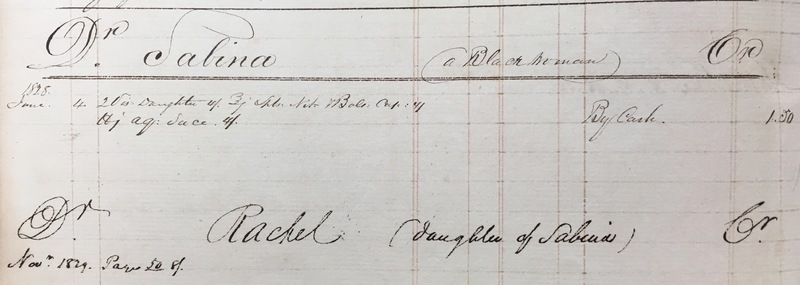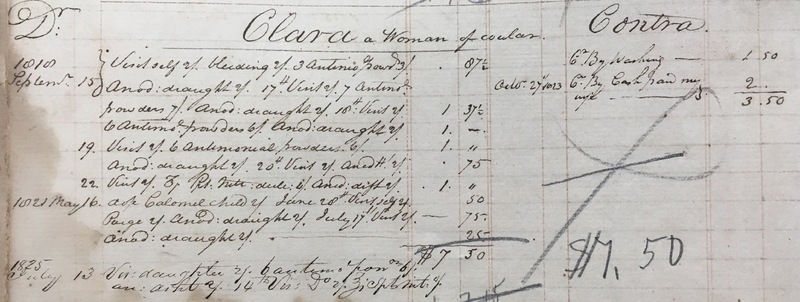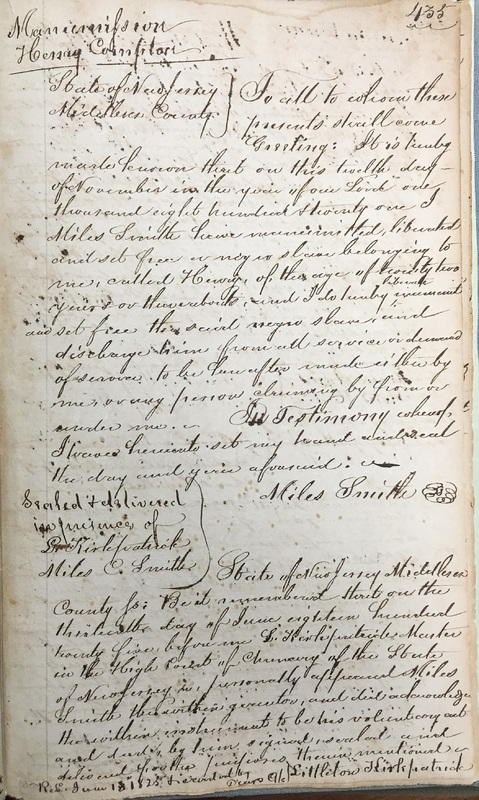Employment & Paying for Treatment
Many of the accounts African Americans held with Jacob Dunham show no record of payment. However, some blacks, both free and enslaved, made payments to the doctor.
A black woman named Sabina paid Jacob Dunham $1.50 in cash on June 4, 1824 for a visit and medicine for her daughter Rachel.
Between September 1818 and May 1821 Clara, "a woman of coular" accumulated a debt of $7.50 for Dr. Dunham's services. Clara paid down $1.50 of her bill by doing washing for the Dunham family. She also paid $2.00 in cash, which she gave to Jacob Dunham's wife on October 27th, 1823. Clara likely earned the $2.00 by doing laundry for whites in New Brunswick.
Other African Americans’ accounts also speak to their employment. Jacob Dunham recorded the balance due for medical services he provided in October 1828 and January 1829 in an account for “Johnston (a col’d man, the barber).”
Additionally, a black man named Theodore Smith was charged for “dressing apprentice’s chin and box of ointment” on May 23, 1824. The fact that he had an apprentice suggests Theodore Smith was probably engaged in a skilled trade.
Henry Compton (alias Smith) was a black man who saw Dr. Dunham six times between 1820 and 1821. On August 31, 1821, he made a payment of $4.00 cash towards his account.
Records indicate that Henry Compton was manumitted by slaveholder Miles Smith on November 12, 1821. It appears that Compton made the $4.00 payment to Dunham while he was still enslaved, a few months before he gained his freedom. The fact that Henry Compton had his own account with Dunham and the cash to pay his bill before he was manumitted meant he had some financial autonomy as an enslaved worker. Enslaved laborers often worked for themselves on their day off or were rented out to others and allowed to retain a portion of their earnings. This may have been the case for Henry Compton.





